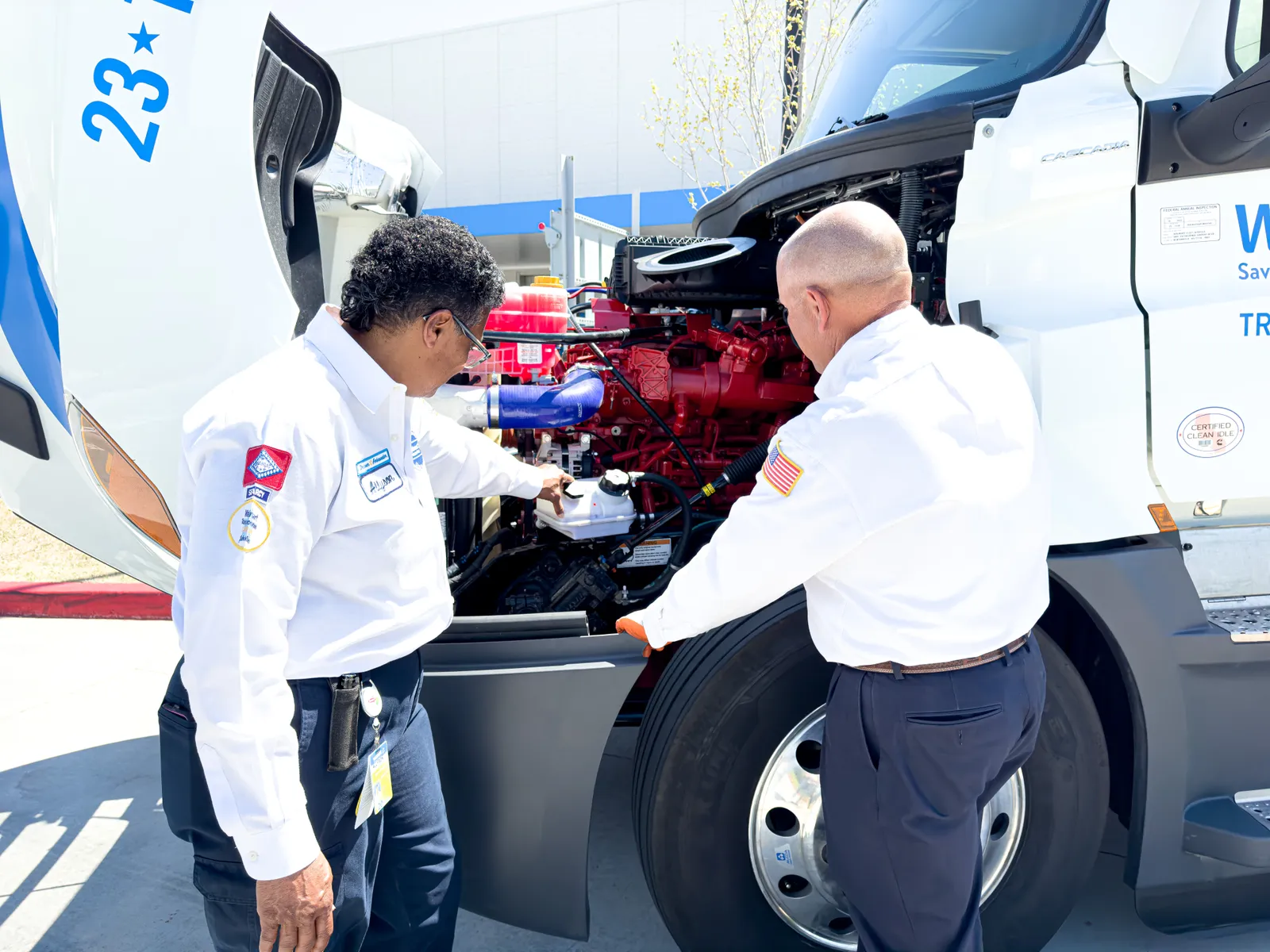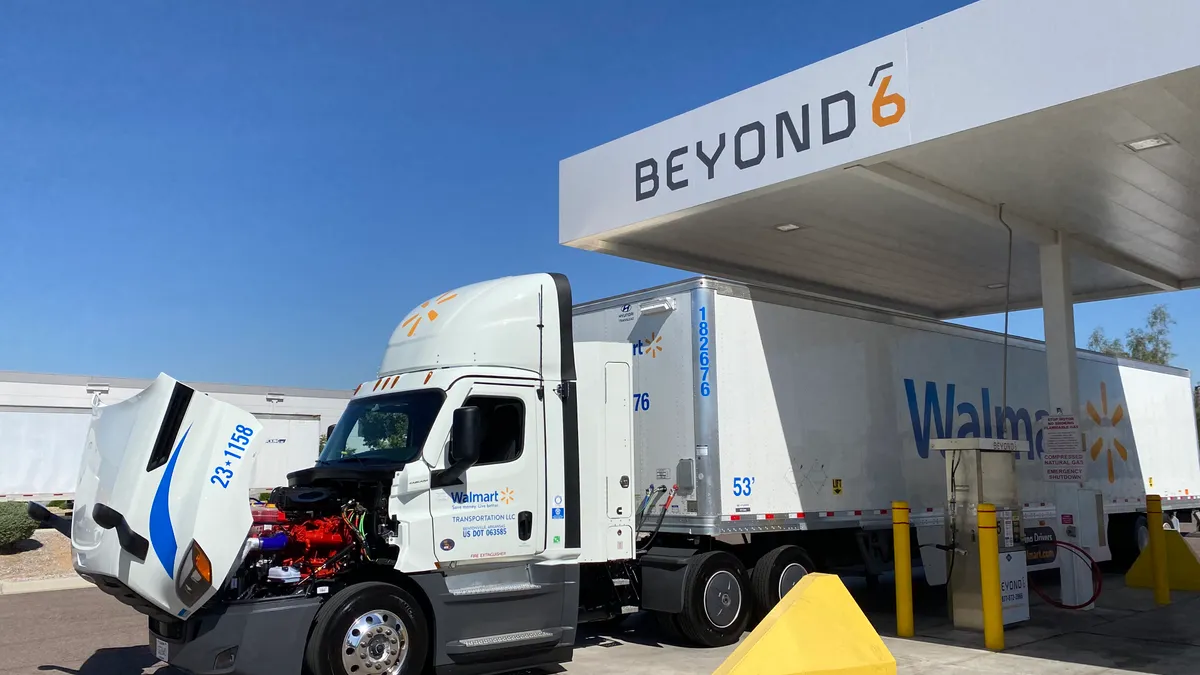Walmart and engine maker Cummins are out to prove natural gas-powered engines can help the trucking industry reduce greenhouse gas emissions.
The retail giant debuted the first of five new tractors powered by a Cummins-built compressed natural gas (CNG) engine on April 18. A CNG engine is designed to provide similar performance and range to a diesel engine, but run quieter and offer lower maintenance costs, according to the manufacturer.
The tractor made its inaugural trip from Indiana to California last month and refueled at three Chevron stations and three network sites, which offer CNG, along the way.
The introduction of CNG trucks into its fleet is part of a broader effort by Walmart to achieve zero emissions across its global operations by 2040.
Renewable natural gas is produced when biomethane from decomposing organic matter or landfill waste is captured and processed into natural gas.
The process aims to make use of methane gas, which is 25 times worse than carbon dioxide at trapping heat within the atmosphere and contributing to climate change when uncaptured and non-processed, according to Walmart.
A small but growing role for ‘the most mature, least disruptive’ alternative fuel
Walmart also has incorporated other alternative fuel vehicles into its fleet of 10,000 tractors, including electric vehicles and hydrogen-powered trucks.
“We are testing and trialing many different alternatives to reach our zero emissions goal by 2040,” Walmart spokesperson Cherry Evans said in an email.
Amid a spurt of advancements in the development of alternative fuels, Cummins is pushing to create a place for CNG fuel in the trucking industry.

Cummins’ engine used in Walmart’s new tractor is its first 15-liter natural gas motor designed as a heavy-duty, line-haul solution for North America. Cummins will put the engine into full production next year, according to spokesperson Chris Vanasdalan.
The engine maker expects to deliver 25 engine test units across 16 fleets this year.
For the Walmart partnership, the CNG engine and fuel storage system were installed in a standard-diesel Freightliner Cascadia 126 truck provided by the retailer, Vanasdalan added.
Cummins’ work with Walmart coincides with its Destination Zero strategy, which includes a target to cut emissions from newly sold products by 25% by 2030, with the ultimate goal of achieving zero emissions by 2050.
“Our customers need the right tools for their work, but those tools need to be reliable, efficient, cost-effective, sustainable, and scalable,” Vanasdalan said. “Our Destination Zero strategy focuses on new powertrains including advanced diesel, natural gas, hydrogen engines, hybrids, battery electric, and fuel cells along with an increased use of low-carbon fuels and renewable electricity and related infrastructure.”
Natural gas powertrains represent a small portion of the North American truck market, but interest in the technology has increased over the past year due to their financial and environmental benefits, he added.
Werner Enterprises announced April 25 it will be testing the same engine from Cummins as part of the carrier’s efforts to reduce its carbon emissions 55% by 2035.
CNG has a competitive edge over other emerging fuel sources and electric vehicles because it’s been commercially available for decades, with an established national network of fueling sites.
“It’s fair to say that natural gas is the most mature, least disruptive alternative fuel technology available today,” Vanasdalan said.














